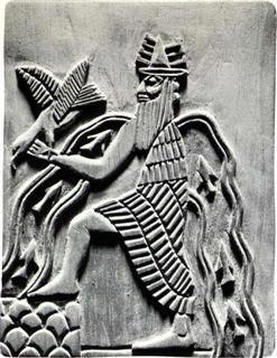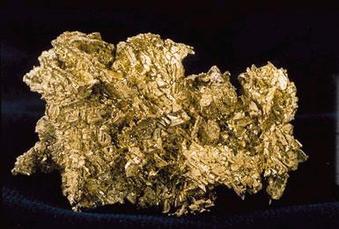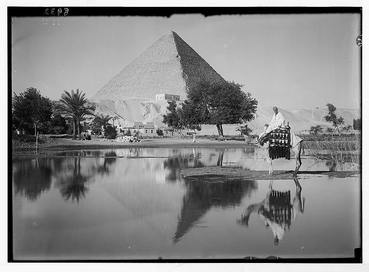JESUS' ALIEN ANCESTORS?
Jason Colavito
2001
Sir Laurence Gardner made a name tracing the lineage of
Jesus to the present day. Then he took a look back to an alien
ancestry. We look for the truth about extraterrestrial genealogy.
Jesus to the present day. Then he took a look back to an alien
ancestry. We look for the truth about extraterrestrial genealogy.
Notes
- This article first appeared on my old website, Lost Civilizations Uncovered, in 2001.
- A version of this article appears in my book, The Cult of Alien Gods.
- This article was written before Laurence Gardner's death in 2010.
INTRODUCTION
In October of 1996 Sir Laurence Gardner, the Histographer Royal to the house of Stewart and a prominent sovereign and chivalric genealogist, produced a powerful and sometimes persuasive volume tracing the lineage of Stewarts back to the alleged children of Jesus. In Bloodline of the Holy Grail, he had claimed that Christ married Mary Magdeline and argued that their children carried the royal blood of the House of David; therefore, anyone descending from these people had the blessing of divine powers to rule. A year ago, he continued his quest for the ultimate origins of Jesus, and he made controversial claims that stretch the power of imagination and slip into the dangerous realm of extraterrestrial visitation. In Genesis of the Grail Kings, Gardner claims evidence that the royal bloodline descends ultimately from the Biblical Cain, whose sons were of extraterrestrial persuasion. Gardner spoke about them in a speech:
|
"They were the true Sons of the Gods, who were fed firstly on Anunnaki Star Fire from about 3800 BC and, subsequently, on 'high-spin' metal supplements from about 2000 BC. In short, they were bred to be leaders of humankind, and they were both mentally and physically maintained in the 'highward' state: the ultimate dimension of the missing 44 per cent -- the dimension of the Orbit of Light, or the Plane of Sharon."
|
THE BLOOD IS THE LIFE
The meaning of those enigmatic statements will become plain soon enough. Gardner develops his thesis with almost encyclopedic detail. Gardner's treatise runs 316 pages, but the argument is available as an on-line lecture, and it is from this that we shall quote Gardner in his own words. He informs the audience that "Genesis of the Grail Kings concentrates on Old Testament times, particularly on the early stories from the books of Genesis and Exodus."
Already we have a problem because Gardner is taking the Biblical stories to be something more than fable and something less than truth. He seems to see them as a conspiracy designed to obscure the truth with a quasi-religious message superimposed over an ancient record of alien visits: "the Old Testament scriptures were designed to uphold the emergent Hebrew faith, rather than to represent historical fact." He says that the Old Testament does not accurately portray the ancient past, yet paradoxically, he claims to know what that hidden past is.
Gardner begins with an excellent description of the origins of the Hebrew faith as a mixture of heretical Egyptian sun-worshippers and remnants of the ancient Sumerian belief-system: "the definitions God and Lord are used and intermixed throughout as if they referred to the same Jehovah character, but originally they did not. One was a vengeful god (a people suppressor [sic]), and the other was a social god (a people supporter)." It is perhaps the most infuriating part of Gardner's scholarship, that he mixes what would otherwise be genuinely revolutionary theories on the origin of Judaism with less than scientific beliefs. His summary of the fusion of the Sumerian gods Enki and Enlil to form the composite known as Jehovah (YHWH) is first-rate, if speculative.
The meaning of those enigmatic statements will become plain soon enough. Gardner develops his thesis with almost encyclopedic detail. Gardner's treatise runs 316 pages, but the argument is available as an on-line lecture, and it is from this that we shall quote Gardner in his own words. He informs the audience that "Genesis of the Grail Kings concentrates on Old Testament times, particularly on the early stories from the books of Genesis and Exodus."
Already we have a problem because Gardner is taking the Biblical stories to be something more than fable and something less than truth. He seems to see them as a conspiracy designed to obscure the truth with a quasi-religious message superimposed over an ancient record of alien visits: "the Old Testament scriptures were designed to uphold the emergent Hebrew faith, rather than to represent historical fact." He says that the Old Testament does not accurately portray the ancient past, yet paradoxically, he claims to know what that hidden past is.
Gardner begins with an excellent description of the origins of the Hebrew faith as a mixture of heretical Egyptian sun-worshippers and remnants of the ancient Sumerian belief-system: "the definitions God and Lord are used and intermixed throughout as if they referred to the same Jehovah character, but originally they did not. One was a vengeful god (a people suppressor [sic]), and the other was a social god (a people supporter)." It is perhaps the most infuriating part of Gardner's scholarship, that he mixes what would otherwise be genuinely revolutionary theories on the origin of Judaism with less than scientific beliefs. His summary of the fusion of the Sumerian gods Enki and Enlil to form the composite known as Jehovah (YHWH) is first-rate, if speculative.
|
Then he goes on to argue that "the first King of the Messianic succession was the biblical Cain(Kain), head of the Sumerian House of Kish." From him, everyone from David to Jesus to today Duke of Albany descend. Cain, of course, was the son of Adam and Eve, who "were purpose-bred for kingship by Enki and his sister-wife Nîn-khursag. This took place at a 'creation chamber' which the Sumerian annals refer to as the House of Shimtî." There, Gardner says, Adam and Eve "were created from human ova fertilized by Lord Enki."
Needless to say, there is no evidence to support the idea that Enki was in any way real, nor is there evidence that Adam and Eve, if they existed at all, were genetically engineered by Enki. By linking the Bibilical God to the Sumerian pantheon, Gardner can then equate the Elohim to the signature assembly of the Sumerians, the Annunaki. These deities gained prominence in the 1970s when Robert Temple equated them to the orbital period of the stars of the binary Sirius system and Zecharia Sitchin claimed that they were aliens from a trans-Plutonian planet and created man as a slave race to mine gold. For Gardner, the Anunnaki provide the crucial link between the mythological gods of Sumeria and the Old Testament narrative: "In fact, the Grand Assembly of the Anunnaki (later called the Court of the Elohim) is actually mentioned in the Old Testament's Psalm No. 82, wherein Jehovah makes his bid for supreme power over the other gods." For the record, that Psalm states "God has taken his place in the divine council; in the midst of the gods he holds judgment. (Revised Standard Version)" He then berates the council for unjust actions and threatens them with death. |
That the Psalm is a remnant of Sumerian myths is probably justified, but whether this implies a reality to the Anunnaki legend is doubtful. To seal the alleged connection between the Bloodline of the Grail and the Sumerians, Gardner claims the Sumerian word for the Mark of Cain is "Gra-al," which he implies sounds a lot like the holy "Grail," identified in a previous book with the blood of Jesus. He argued this identification came from a medieval French pun: Sang-real (royal blood) vs. San-greal (Holy Grail). "Real" sounds like "greal" which sounds like "Gra-al," so everything fits. Of course, the Latin word "homo" (man) sounds like the Greek word "homo" (same), so Gardner's logic would predict that the Romans must have viewed all men as identical. This, of course, is wrong. Without proof that a French pun derives from a Sumerian word (unknown, of course, to the medieval French who could not read cuneiform) this argument is nothing more than innuendo.
Gardner then goes on to ask a rhetorical question: "[S]ince it is known that the Chalice is a wholly female symbol which has been emblematic of the womb from the earliest times (as discussed in Bloodline of the Holy Grail), might this Messianic life-blood (now symbolized by wine) have been an extract of menstrual blood in original times?" For him the answer is a solid yes, with the Sumerians drinking menstrual blood in rituals. However, others disagree and argue that any menstrual rituals were not connected with the Anunnaki, but with the moon-god Sin, who controlled fertility cycles. As even fellow New Age author Chris King comments, "You could say the ancient moon god was both the god of the cosmic mind and the cause of menstruation - the source of conception!" For her, the Annunaki have no role; in fact, most Sumerian mythological texts assign the Annunaki nothing more than a symbolic role as a council of gods devoid of personalities or special powers.
Gardner claims that the Anunnaki's menstrual blood stimulates the pineal gland in the brain, providing an infinite source of melatonin to stop the aging process. According to the Columbia Encyclopedia, "In many animals, including humans, the pineal gland synthesizes a hormone called melatonin in periods of darkness. . . In humans the pineal gland begins to produce melatonin at age 3 months; production falls steadily from puberty on." As for the claims on aging, the nice people at familydoctor.org tell their readers, "Despite claims that have been made in magazines and newspapers, no scientific studies have shown that melatonin can slow down the aging process or prolong your life." Yet Gardner insists that the menstrual blood of the Anunnaki was special: "In addition to being the Gold of the Gods, the Anunnaki menstruum was also called the Vehicle of Light, being the ultimate source of manifestation and, in this regard, it was directly equated with the mystical Waters of Creation - the flow of eternal wisdom."
He called the Anunnaki's menstrual blood "Star-Fire" and said that it was the source of kingly power. When consumed, Gardner writes, "the anti-ageing [sic] properties of the regularly ingested hormonal secretions facilitated extraordinary life-spans." This, of course, is why the patriarchs lived hundreds of years, he said. Furthermore, he attributes the long lives of Enki and Enlil, the Sumerian gods, to this same Star-Fire.
Of course, he fails to note the research Chris King used in writing her book The Genesis of Eden. She found a decidedly lunar influence on early Jewish thought. Methuselah was said to have lived 969 years. Menstrual fountains of youth are a possible answer, but a lunar calendar makes more sense. If each lunar cycle is counted as a year, then Methuselah (if he ever lived at all) would only have lived 81 years, a long but normally long life. The Hebrews of the time were known to be lunar calendar afficianados. Even Christian true believer Dr. Hugh Ross states specifically that the Sumerians, the people of the Annunaki, had short years: "Some early Mesopotamian records (circa 1500 B. C.) indicate a calendar of twelve months, each month 30 days long." Thus the amazing lifespans of the ancients can be explained simply and easily without menstrual blood feasts.
|
Gardner then claims that when Enlil (Jehovah) took over the Sumerian pantheon and expelled Enki, the Anunnaki fled with Enki leaving Enlil without his youth-maintaining blood. Gardner claims Enlil then ate ground gold to stay young: "Gold is the most noble of metals and was always representative of Truth. Through the regular use of Anunnaki Star Fire (the Gold of the Gods) the recipients had been moved into realms of heightened awareness and consciousness because of its inherent melatonin and serotonin. . . Star Fire was replaced by a substitute nourishment at the very time of Melchizedek and Abraham. This substitute was made from shem-an-na -- the white powder of gold, which the Mesopotamians called 'highward fire-stone'." Of course, there is no proof whatsoever that eating gold or metal of any kind produces eternal youth. Nor is there proof that the ancients consumed metal. Gardner says that eating the mysterious "white powder of gold" stimulated the pineal gland, identified in esoteric lore as the seat of the soul.
|
Gardner says this metal is similar to a science experiment which reduced metal to monoatomic white powder through complex stimulation of atomic nuclei. As the nuclei are stimulated, the atoms lose weight and seem to disappear: "Moreover, its optimum weight is actually 56% of the metal weight from which it was transmuted. So, where does the other 44% go?" Gardner, as always, has an answer: "It becomes nothing but pure white light and translates to another dimension beyond the physical plane." He rejects normal physics where matter converts to energy and vice-versa (as in e = mc squared). He speculates about recent work with minute quantities of atoms that seem to defy gravity, and then he claims that the ancient Egyptians and Hebrews could make tons of the stuff in large sacred fires and apply it to a host to make that object fly: "This host might be a a straightforward laboratory pan or container, but it could equally be an enormous block of stone as used in pyramid building. Indeed, pyramids are, as established by their very name, fire-begotten.'"
|
The allusion to pyramids leads to a discussion of the Great Pyramid, where Gardner claims a miracle happened. He details the construction of the Pyramid's King's Chamber and its traces of platinum-group compounds, not dissimilar to the white powder he made so much of earlier: "The King's Chamber was, therefore, apparently contrived as a superconductor, capable of transporting the pharaoh into another dimension of space-time -- and it was here that his Rite of Passage was administered in accordance with the Book of the Dead." This alternate dimension is obviously the home of the Anunnaki, who are more accurately described as transdimensional rather than extraterrestrial. Of course, one might ask how the ancients invented a transdimensional portal and forgot to tell anyone, but one might also ask what Egypt has to do with the Sumerian Enlil and Enki. Why, Egypt was part of this whole system because Moses came from Egypt, Gardner says. In fact, he discovered that the pharaohs were all descended from Cain and Adam and Eve!
|
Of course, he believes this knowledge was censored by the Christian religion: "Gradually, as new discoveries are made, it is evident that we are now emerging from the darkness of our preconceived, but unfounded, notions. Even so, the centuries of Church-led indoctrination make it very difficult to discard the restrictive dogma of inbred third-hand tradition in favour of a greater enlightenment from those who were there at the time."
CONCLUSION
The sad part is that Gardner often has interesting and provocative ideas, but he buries his important scholarship and theories in a maze of transdimensional beings drinking menstrual blood. If he had left out the biblical literalism and stuck with the intriguing history of faith, he might have had something really important to say.
CONCLUSION
The sad part is that Gardner often has interesting and provocative ideas, but he buries his important scholarship and theories in a maze of transdimensional beings drinking menstrual blood. If he had left out the biblical literalism and stuck with the intriguing history of faith, he might have had something really important to say.





